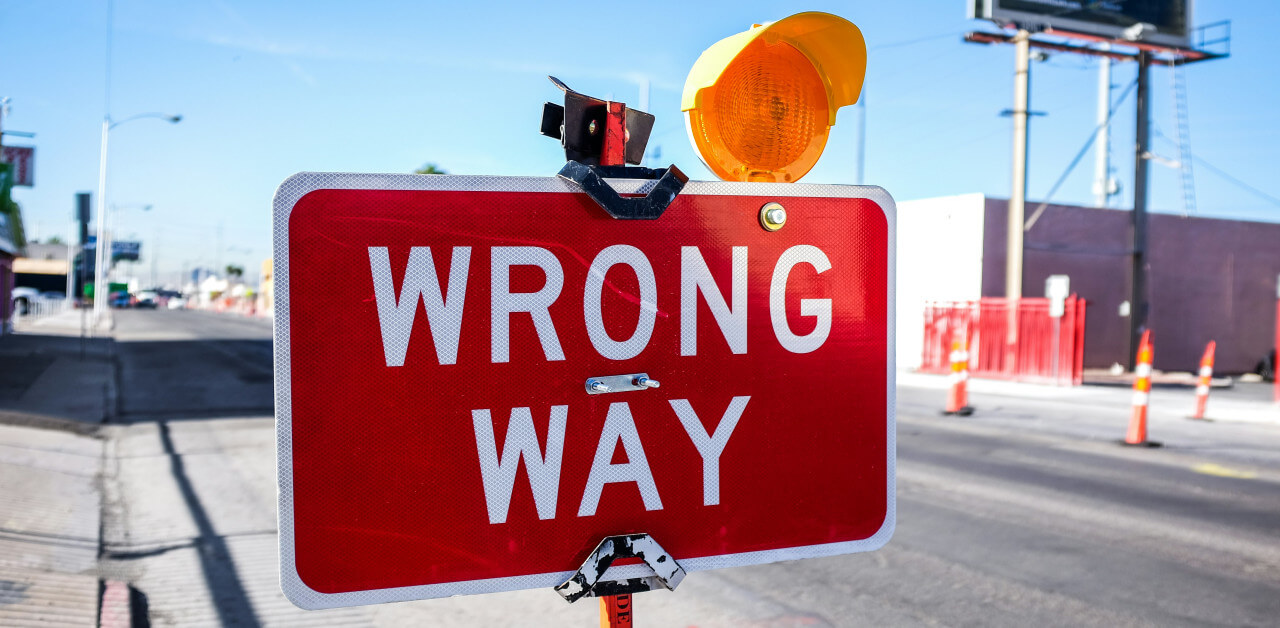Common Website Monitoring Mistakes (and How to Avoid Them)
Nowadays, website monitoring has become a key component to the success of any website. Be it in E-commerce, blogs, and corporate websites all require accessibility, security, and high performance. In some cases, business-based web applications experience downtimes, thus in turn lead to poor load times or failures of functions. In addition, it is a humiliation for users, a disaster in search engine rankings, and considerable loss in revenue.
Traditional monitoring setups overlook common mistakes like depending on human checks and ignoring some key performance metrics. These common mistakes make the company’s systems vulnerable to several technical problems that pass unnoticed until too late.

However, due to the introduction of automation systems, it would be wise for any company to use an automatic monitoring policy. This ensures proactive alerts are raised on issues occurring before they affect the user. Therefore, in this guide we will give you some clear insights into the commonest mistakes while monitoring your website and how to go about avoiding them.
1. Manual Checks Reliance Only
The Mistake
One of the most common mistakes done by website owners is to manually check their website. Most manually check their website 3-4 times every day, and think it is enough to keep their site running. Although the problems, once in a while, might be caught the approach is unreliable.
Why it Fails
Most of the website’s might occur when no one is on the watch. Cases like server crash, slow page load, or page being hacked might happen without anyone noticing for hours and sometimes even days. This makes frustrated customers walk away, which inturn makes money go down the drain.
Fix it
To fix this issue, use a monitoring software that monitors all aspects of your website 24/7. These automated tools check uptime, speed, and security and notify you via email, SMS, or other channels in real time whenever an issue develops. You’ll be kept in the loop with automation, so you can act quickly before the issue escalates.
2. Monitoring Only the Homepage
The mistake
Most website owners assume that if the homepage works, the website works because the homepage is, indeed, a major entry point. However, there are many other very crucial pages. While the homepage is a critical entry point, it doesn’t represent the full user experience. Other essential pages (such as login portals, checkout pages, and contact forms) can experience issues that go unnoticed if they’re not actively monitored.
Why it Fails
Users are probably more likely to face problems in navigating important areas of the website other than the homepage. There is a complete loss of sales due to a broken checkout page, and a malfunctioning log-in portal also makes it impossible for customers to access their accounts. These issues can go unnoticed for hours or even days, which can, unfortunately, lead to frustration for visitors and eventually affect business.
Fix it
To avoid this, monitor not just your homepage but also crucial subpages and user flows. An automated monitoring solution enables you to track conditions on those login pages, checkout processes, or any other significant location that has to have perfect functionality across an entire website.
3. Not Monitoring Website Speed
The mistake
Another common mistake that most web owners make is to think that they are safe once their sites go live, without considering that speed is also important. There are many aspects that come into play when it comes to determining the efficacy of a website, and one of them is speed. Once a site takes time to load, this frustrates the visitors.
Why It Fails
Users want everything on the web to happen at the click of a button. As far as page loads are concerned, if it’s the least bit slow, they’re out of there. To make matters worse, Google makes site speed a top-ranking criterion, meaning the slower sites are left in the dust as far as search results are concerned. Performance metrics are important because otherwise, your traffic plummets, engagement fizzles, and profits dwindle.
Fix It
Monitor your website’s speed using tools that track load times, Core Web Vitals, and overall performance. Identify bottlenecks such as big images, slow server response times, or unoptimized code. Reviewing these metrics regularly implies improvement through time concerning a smooth user experience that leads to better search ranking and conversion rates.
4. Ignoring SSL Certificate Expiry
The mistake
Many website owners get SSL certificates and forget about them, thinking that they have no expiration. When the certificate expires, the browser throws up a red warning and makes the users think that the site is insecure.
Why It Fails
An expired SSL certificate could mess up your reputation substantially. First of all, users will most likely leave within seconds of seeing that security alert and, as a result, you would be losing traffic. And, as you might guess, you will lose conversions. Besides, unsecured websites can be punished by search engines when it comes to visibility and ranking.
Fix it
To avoid all SSL-associated disturbances, use an SSL monitoring tool that tracks expiration dates and sends alerts before the renewal deadline. It would always be good to have your certificate automatically renewed with your certificate provider. This makes the certificate renewal process quite painless, ensuring that your site is never unsecured for any duration.
5. Overlooking Domain Expiry
The mistake
Another common mistake among most website owners is that they register a domain and forget about it, under the assumption that they will receive a renewal notice whenever it is time for renewal. But sometimes, the renewal notice gets buried in the inbox or simply goes unnoticed, leading to an unfortunate expiration.
Why It Fails
If your domain goes down for renewal, your website will go offline immediately and thus be unavailable to visitors. It’ll be liable for competitors or malicious entities to acquire any expired domain, thereby leading to losses in business, damage to brand reputation, or even security risk assessment. Some instances of lost domains may be cost-prohibitive to recover; others may indeed prove impossible.
Fix It
To avoid this risk, set your domain to auto-renew to guarantee uninterrupted ownership. A domain monitoring tool will alert you well ahead of the expiration renewal. Keeping your domain is an easy but important step in maintaining a stable and long-term online presence.
6. Not Testing Transaction Flows
The mistake
Many website owners presume that the important functions such as forms, checkout procedure, and login pages always operate as expected. These vital transactions may fail due to unnoticed backend errors, API failures, or breakdown of third-party services.
Why It Fails
When a checkout page, contact form, or user login fails, it can silently trample on sales, generate leads, and degrade the user experience. Since such failures rarely trigger an obvious alerting mechanism, the realization of their existence may go undetected for days or even weeks—hence, depriving the organization of revenues while frustrating the end user. If the visitors encounter a broken functionality, they would exit the page and probably never return.
Fix It
Synthetic transaction monitoring makes it possible to accurately simulate user interactions anywhere and at any time across the site. Thus, these tools, which mimic user actions like filling out forms, logging in, and completing purchases, help to detect failures before they affect customers.
7. Using Only One Location for Monitoring
The mistake
Another mistake is that we monitor the website from a single geographic perspective; if the website functions here, it is assumed that it does indeed work throughout the world. However, internet infrastructure, server performance, and network issues vary by region, leading to inconsistencies in availability and speed.
Why It Fails
A website might work in one country but can be agonizingly slow or completely unreachable from any other because of the server going down, CDN going down, or geo-restrictions. If you only have one location for monitoring, you might completely lose sight of many critical problems that are affecting users somewhere else, resulting in loss of traffic, poor user experience, and even loss of revenue.
Fix It
Use a worldwide monitoring software that can check the site across various parts of the world. You would identify regional downtimes, slow site load times, and network problems in advance, before large peer audience groups will likely be affected by the issues.
8. Delayed or Missing Alerts
The mistake
Waiting for a single notification method or improperly configuring alert settings could result in the delay or missing of alerts. If alerts received are late, serious website issues may remain unnoticed for hours or even days.
Why It Fails
A misconfigured monitoring system or reliance on just one channel (such as email) can cause delays if that channel fails. This could lead to downtime, loss of revenue, and annoyed users when important messages go straight to the spam folder or get overlooked.
Fix It
Be sure that you get real-time alerts through multiple channels, including email, SMS, Slack, or push notifications. Test your alerting system periodically to verify that notifications are sent to the right people. A well-configured, multi-channel alert system allows you to respond faster, thereby limiting disruption to the website and ensuring quick resolution of any issue.
9. Forgetting to Monitor After Site Updates
The mistake
Many website owners launch new features, pages, or updates without reviewing their monitoring setup. They assume that whatever monitoring they had in place covered everything, missing blind tracking spots induced by changes to the URLs, scripts, or user flows.
Why It Fails
The new checkout process, revamped login system, or a freshly designed page might break some functionality without raising any alerts in the first instance. Any non-adjustment of the monitoring tool could cause such issues to go unnoticed: broken links, failed transactions, slow responses, etc., putting off users and devastating conversions.
Fix It
After every major update or deployment, review and adjust your monitoring tools. Have an active status over the tracking process for any important things, whether that be pages, APIs, or scripts. Constantly test user flows to capture errors before customers do.
10. Failing to Review Monitoring Reports
The Mistake
Many website owners react to alerts with little regard for historical data and performance trends. Real-time alerts are essential, but an inability to analyze reports that have occurred in the past means missing the gradual instigation of problems that could become major ones.
Why It Fails
Without regular reviews, slowly increasing load times, recurring downtime, or frequent errors may go unnoticed until they significantly impact user experience. Delaying the fixing of the problem until it breaks a lot might mean traffic loss, bad SEO rankings, and revenue loss.
Fix It
Continually assess the monitoring reports, logs, and performance data for changing patterns so that you may develop some reporting on your own when issues arise. Keep an eye on uptime, speed, and error trends so that you can proactively counteract possible problems.
Conclusion
Monitoring isn’t just a checkbox—it’s an ongoing process. Avoiding these common mistakes can save you from costly outages, poor user experiences, and lost revenue. Audit your current setup today and make sure you’re covered where it matters most.
Not sure where to start? Try the Super Monitoring tool for all-in-one uptime, performance, and transaction monitoring.
About the Author

Robert Koch – experienced SaaS application designer and business optimization through automation consultant. An avid home brewer and cheesemaker in his spare time.






